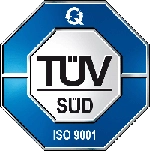The draft Budget Law for 2026, approved by the Council of Ministers on 17 October 2025, introduces a significant innovation in the field of international taxation, amending the treatment reserved for so-called High Net Worth Individuals (HNWIs) who transfer their tax residence to Italy.
Among the most impactful measures is the further increase of the substitute tax provided for under Article 24-bis of the Italian Income Tax Code (TUIR)—the so-called flat tax for new residents. The objective is both to attract investors and high-income taxpayers and to align the Italian regime with recent European trends in residence-based taxation.
The Legislative Framework: Article 24-bis of the TUIR
Article 24-bis, entitled “Option for the substitute tax on foreign-source income realised by individuals transferring their tax residence to Italy”, governs an optional substitute tax regime applicable to income produced abroad. Specifically, in order to determine which income qualifies as foreign-source income, the provision expressly refers to the criteria set out in Article 165(2), which in turn refers to Article 23 of the TUIR.
However, the law provides for a single exception: capital gains arising from the disposal of qualified shareholdings realised within the first five tax years of the regime remain subject to ordinary taxation pursuant to Article 68(3) of the TUIR, which provides for a 26% withholding tax.
The regime allows individuals transferring their tax residence to Italy—and, upon request, their family members—to replace the ordinary progressive personal income tax (IRPEF) with a fixed annual substitute tax (the so-called flat tax).
Formal Requirements for Access to the Regime
Taxpayers may opt for the regime if they:
- Have not been tax resident in Italy for at least nine of the ten tax years preceding the first year of effectiveness of the regime, pursuant to Article 2(2) of the TUIR;
- Transfer their tax residence to Italy under the same provision—meaning registration in the registry of resident population, domicile, habitual abode or presence in Italy for more than 183 days per year (184 days in a leap year), including fractions of days;
- Elect to join the regime in the income tax return for the tax period in which the transfer of residence occurs (Schedule NR of the Modello Redditi PF). Alternatively, the option may be exercised in the following year.
Provided these requirements are met, the taxpayer may, upon express request, extend the regime to one or more family members, as defined by Article 433 of the Civil Code, provided that they also transfer their tax residence to Italy.
Evolution of the Flat Tax for New Residents: From the Original Regime to the 2026 Draft Budget Law
Originally, the regime for new residents introduced a substitute tax of €100,000 per year on foreign-source income, as provided in the 2017 Budget Law.
This amount was doubled by Decree-Law No. 113/2024, which raised the substitute tax to €200,000 per year.
The 2026 Draft Budget Law confirms the trend towards increasing the amount of the flat tax for new residents. In particular:
- The annual substitute tax on foreign-source income rises from €200,000 to €300,000 for new elections made from 1 January 2026;
- For family members of the main taxpayer opting for the extension, the additional substitute tax increases from €25,000 to €50,000 per year;
- The maximum duration of the regime (15 years) and the possibility to exclude specific countries from the regime’s scope remain unchanged.
The tax, which replaces personal income taxes, must be paid in a single instalment by 30 June of each year.
Exercising the Option
Under Article 24-bis(3) of the TUIR, the option should be exercised only after obtaining a favourable ruling from the Italian Revenue Agency (Agenzia delle Entrate).
However, Ruling No. 47060 of 8 March 2017 abrogated this obligation, allowing taxpayers to exercise the option in one of two ways:
- By submitting a ruling request (interpello) to the Revenue Agency, attaching the relevant checklist demonstrating that all eligibility conditions are met, and obtaining a positive reply; or
- Directly through the income tax return, without the need for a prior ruling.
Accordingly, the option is deemed perfected upon submission of the tax return for the year in which the taxpayer transferred residence to Italy, or for the following tax year.
With Resolution No. 44/E of 2018, the Revenue Agency established the tax code “NRPP”, labelled “Substitute income tax – New residents – Article 24-bis(2) of the TUIR”, to be indicated in the F24 payment form.
Duration, Effects and Causes of Termination
The regime applies for a maximum of fifteen years, starting from the tax year in which the individual becomes tax resident in Italy.
The option is automatically renewed each year, unless one of the following events occurs:
- Termination
- Revocation of the option by the taxpayer, which also applies to any family members who benefited from the extension;
- Automatic cessation, if the substitute tax is not paid within the prescribed time limits or if the taxpayer transfers tax residence abroad.
In any case, the effects cease after 15 years from the first year of validity of the option.
Additional Benefits
Individuals who opt for the flat-rate taxation regime—and their family members—may also enjoy additional benefits concerning assets and investments held abroad.
Specifically, the regime grants exemption from:
- The foreign asset reporting obligations under Article 4 of Decree-Law No. 167/1990, which require completion of Schedule RW for foreign financial and real assets;
- The foreign asset taxes, namely IVIE (tax on real estate held abroad) and IVAFE (tax on financial assets held abroad).
Furthermore, taxpayers may benefit from exemption from inheritance and gift tax on foreign-based assets, as amended by Decree No. 139/2024 (see our dedicated article).



















